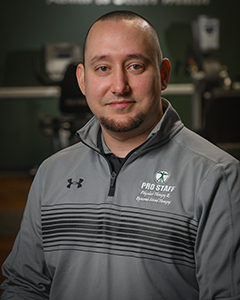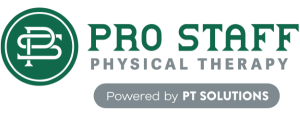Dr. Koc goes over causes, symptoms, diagnosis, and treatment of this shoulder injury.

Our shoulders are essential to daily movement, and labrum tear injuries can severely interrupt our day-to-day quality of life. If you have been diagnosed with this condition, you will typically need physical therapy to aid in your recovery.
The shoulder, otherwise known as the glenohumeral joint, is composed of the upper arm bone (humerus) and your scapula (shoulder blade). These two components make up what we call a “ball and socket” joint. The “ball” is the upper portion on the humerus and the “socket” the small cup-shaped portion of the scapula.
The surface area of the humerus is 3 times the size of where it fits into the scapula. So how does the humerus fit into the scapula? Great question! A labrum is a structure that makes these two bones more congruent, or in other terms, it makes these two bones fit together better. A labrum tear will disrupt this compatibility and cause a physical dysfunction that can be painful, limiting, and stressful.
Let’s go over causes, symptoms, diagnosis, types, and treatment of labrum tear injuries.
What Causes a Labrum Tear? What are the symptoms?
Labrum tear can often be caused by traumatic injury or high repetitive movements. In severe cases, the shoulder will dislocate. This will result in a trip to the emergency room for further evaluation of the bone, nerve, and vascular structures. A labrum tear is typically diagnosed by an MRI or anthrogram, since it is made up of soft tissue.
Common symptoms of a labrum tear include:
- “Popping” or “clicking,” especially with overhead movements
- Shoulder weakness
- Pain located deep within the shoulder joint
- Loss of shoulder function
The Multiple Types of Labrum Tear Injuries
There are several types of labrum tears. Not all of them require surgery. This usually depends on the severity of the injury and how much function is lost as a result. Some common types of labrum tears are also referred to as “SLAP” or “Bankart” tears.
A labrum tear can also be accompanied by other tissue injuries. Common examples include the skeletal muscle of the rotator cuff or the long head of the biceps tendon.
How is a Labrum Tear Treated?
Whether or not surgery is required for a labrum tear, a doctor will prescribe physical therapy for treatment in almost all cases. Depending on the severity of the injury, physical therapy treatment may include:
- Manual therapy to the neck, mid-back, ribs, collar bone, shoulder blade, and upper arm bone
- Strengthening of weaker muscles of the shoulder, neck, arm, and back
- Neuromuscular re-education, which includes techniques to facilitate timely muscle responses
- Functional, work, and/or sport training
Don’t Wait – Seek Treatment Today
If you have a labrum tear injury, don’t wait for it to heal on its own. The right treatment plan is essential to your successful recovery. To request an appointment at one of our physical therapy locations, fill out or Request an Appointment form or contact us for more information.
This post was authored with additional assistance from Maira Lozano, SPT.
PRO STAFF LOCATIONS
OFFERING CERTIFIED
HAND THERAPY
Managing Diabetes: The Role of Physical Therapy
Managing Diabetes: The Role of Physical Therapy As of 2024, approximately 38.4 million Americans, or 11.6% of the U.S. population, have diabetes. Of these, 29.7 million cases are diagnosed, while an estimated 8.7 [...]
Staying Active and Injury-Free During Summer Activities
Staying Active and Injury-Free During Summer Activities Summer is a fantastic time to engage in outdoor sports and physical activities. Whether playing soccer, tennis, cycling, or jogging in the park, staying active is [...]
The Importance of Posture: How Proper Alignment Can Prevent Pain and Injury
The Importance of Posture: How Proper Alignment Can Prevent Pain and Injury In today's fast-paced world, where many hours are spent over desks, smartphones, and computers, posture is often neglected. Poor posture can [...]




